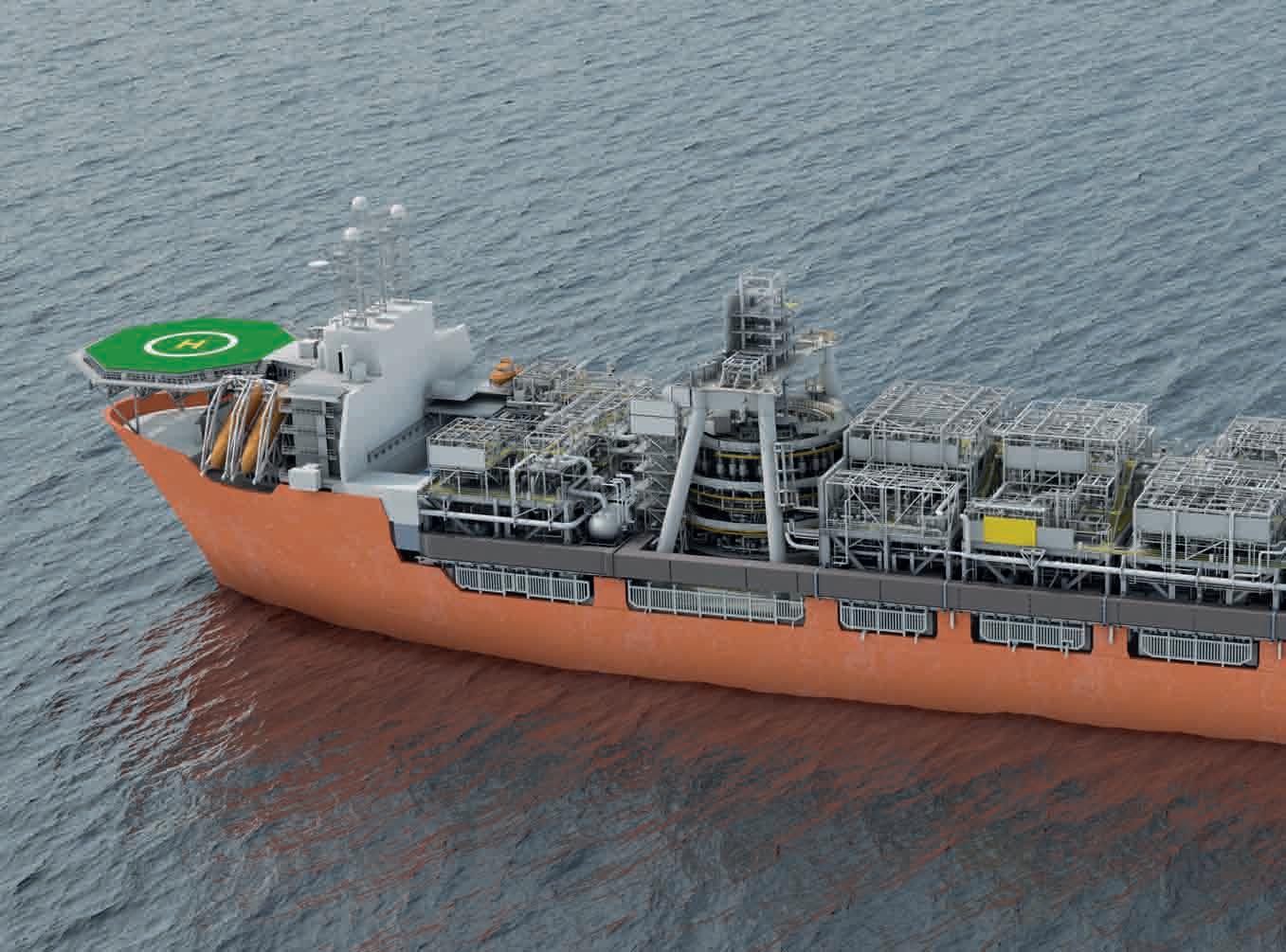
3 minute read
Reducing CO 2 emissions on FPSOs
BP IS THE LATEST IN A GROWING LIST OF OIL & GAS OPERATORS TO PLEDGE FOR NET ZERO EMISSIONS, FOLLOWING IN THE FOOTSTEPS OF Equinor, and AkerBP which plans to make NOAKA the first energy-positive field development on the Norwegian continental shelf. But how can that be achieved, and what are the technology solutions?
WORDS BY JON CHRISTOPHER KNUDSEN, VICE PRESIDENT, GLOBAL DEVELOPMENT AT AKER SOLUTIONS.
Today, approximately 80% of the CO 2 emissions from offshore activities come from gas turbines used to generate electricity on the installations. The turbines are powered by natural gas from the reservoirs that generate electricity to power equipment such as compressors or other rotating machinery. In Norway, electrification of an offshore platform from renewable energy on land (power from shore) offers one solution, but for facilities in remote areas or where it is not feasible to obtain power from the main grid, CCUS offers another alternative.
New hope So why hasn’t CCUS already been widely adopted? Carbon capture from onshore gas power plants is proven and ready, but for
offshore facilities carbon capture has so far not been considered viable due to complexity, weight, and space requirements. Recent developments in
Aker Solutions’ proven and tested compact carbon capture system Just Catch could be used on FPSOs.

About Just Catch
Aker Solution’s Just Catch system is a small modularised carbon capture system, hence providing a solution suitable for installation on places that require a small footprint such as, among other things, FPSOs. When used on an FPSO, it will be able to capture approximately 120,000t of CO 2 per year per gas turbine, thus around 240,000t of CO 2 per FPSO, which for the Norwegian Continental Shelf (NCS) would imply a yearly reduction of 110 MNOK in tax and which would be the equivalent of taking 120,000 cars off the road.
Some key features: • Compact and standardised design with minimum materials and a small footprint. • Completed containers and pre-fab construction, directly from producer, requiring a minimum of engineering and limited preparation work on site. • Easy transport, installation, and hook-up. • 100% automated, remotely controlled. • Fifteen months delivery time from order. • Cost effective.
CCUS offer new hope. Aker Solutions’ proven and tested compact carbon capture system Just Catch could be used on Floating Production Storage and Offloading (FPSO) vessels, both retrofit and newbuilds. More than 180 FPSOs are in operation today and a total of 55 newbuilds are planned to be in operation by 2022.
No showstoppers Assuming that each FPSO has two 30MW gas turbines operating on a 70% load factor, the total CO 2 emission will be approximately 50t million in 2022 – equal to Norway’s total GHG emissions. Through recent studies of Just Catch on FPSOs, Aker Solutions has demonstrated that carbon capture is feasible with no showstoppers. The captured CO 2 can be compressed and injected for permanent geological storage via an existing water injection system or in a separate well.
Critical technology As CCUS applied to power is at an early stage of commercialisation, securing investments will require complementary and targeted policy measures such as tax credits or grant funding. There is no silver bullet to meeting the Paris agreement, but there is no doubt that CCUS will be one of the critical technologies to reduce emissions.
i. akersolutions.com

Jon Christopher Knudsen, Vice President, Global Development at Aker Solutions.










